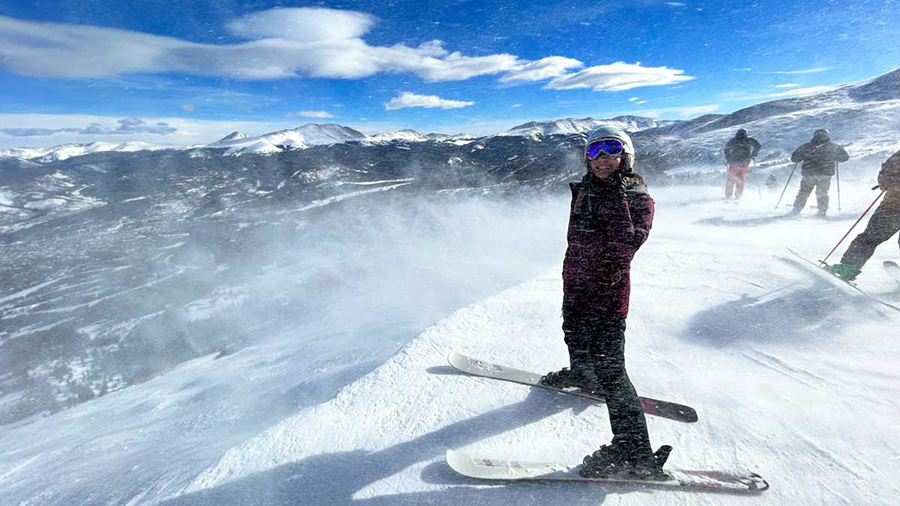Vail Resorts, Inc. reported season-to-date total skier visits were up 6.1 percent from the beginning of the ski season through April 16 year-over-year, helped by favorable weather conditions that enabled the ski resort operator to extend the season at resorts across Utah, Tahoe and the Northeast.
- Season-to-date total lift ticket revenue, including an allocated portion of season pass revenue for each applicable period, was up 4.0 percent compared to the prior year’s season-to-date period.
- Season-to-date ski school revenue was up 26.4 percent, and dining revenue was up 35.3 percent compared to the prior year’s season-to-date period.
- Retail/rental revenue for North American resort and ski area store locations was up 21.8 percent compared to the prior year’s season-to-date period.
“We are pleased with our overall results as the 2022/23 North American ski season nears completion, with strong growth in visitation and spending compared to the prior year,” said Kirsten Lynch, CEO, Vail Resorts. “Our ancillary businesses, including ski school, dining and retail/rental, experienced strong growth compared to the prior year period, when those businesses were impacted by capacity constraints driven by staffing and, in the case of dining, by operational restrictions associated with COVID-19.”
Lynch said the return to normal staffing levels enabled Vail’s mountain resorts to deliver a “strong guest experience,” resulting in a significant improvement in guest satisfaction scores, which have exceeded pre-COVID levels at their destination resorts.
“The results throughout the 2022/23 North American ski season highlight the stability created from our advanced commitment strategy, as the company faced significant weather-related challenges this winter season from the travel disruptions over the peak holiday period, abnormal weather variability across our resorts in the East and significant storm-related disruptions at our Tahoe resorts, as discussed in our March earnings release,” she explained.
Lynch said the results in March and April improved as expected, with strong demand from local and destination guests driving visitation above prior-year record levels. In addition, Vail said favorable conditions enabled the company to extend the ski season at resorts across Utah, Tahoe and the Northeast.
“While some of our Eastern U.S. resorts in the Midwest and Mid-Atlantic closed earlier than originally intended due to unseasonably warm weather, our resorts in the Northeastern U.S. experienced improved conditions and visitation to finish the season,” Lynch shared.
The reported strong finish to the season produced results that were said to be in line with the Resort Reported EBITDA guidance the company issued on March 9. Lynch suggested that strong season pass sales results, prior to the start of the season, significantly mitigated the negative impacts of weather and peak holiday travel disruptions. She said the results highlighted the stability created by their advanced commitment strategy.
“Our attention is already turning to the 2023/24 season with spring pass sales underway,” Lynch said, underlining the importance of spring season pass sales. “Guests continue to be attracted to the network of resorts available on our pass, the pass options and compelling value. To date, we have seen solid growth in pass product sales in both local markets and destination markets, particularly in the Northeast. We will be providing additional details on our spring pass sales in our third-quarter earnings release in June 2023.”
The reported ski season metrics include growth for season pass revenue based on estimated fiscal 2023 North American season pass revenue compared to fiscal 2022 North American season pass revenue. The metrics include all North American destination mountain resorts and regional ski areas, including Seven Springs, Hidden Valley and Laurel Mountain, as if they were owned in both periods and are adjusted to eliminate the impact of foreign currency by applying current period exchange rates to the prior period for Whistler Blackcomb’s results. “Eastern” U.S. resorts collectively refer to the 26 Midwest, Mid-Atlantic and Northeast resorts.
Vail Resorts includes Vail Mountain, Breckenridge, Park City Mountain, Whistler Blackcomb, Stowe, and 32 other resorts across North America, Andermatt-Sedrun in Switzerland, and Perisher, Hotham, and Falls Creek in Australia.
Photo courtesy Breckenridge Ski Resort
















